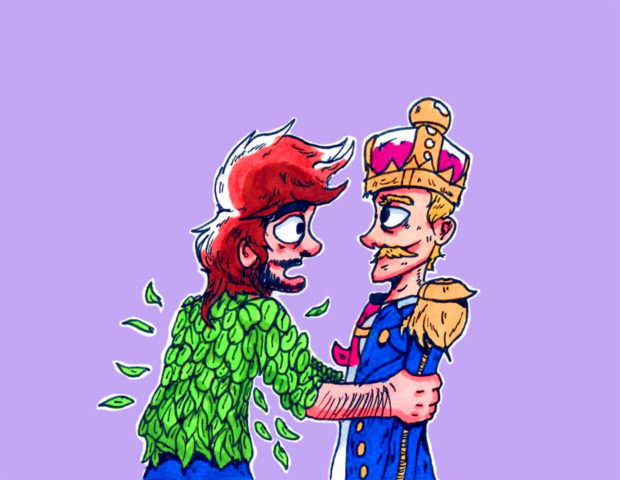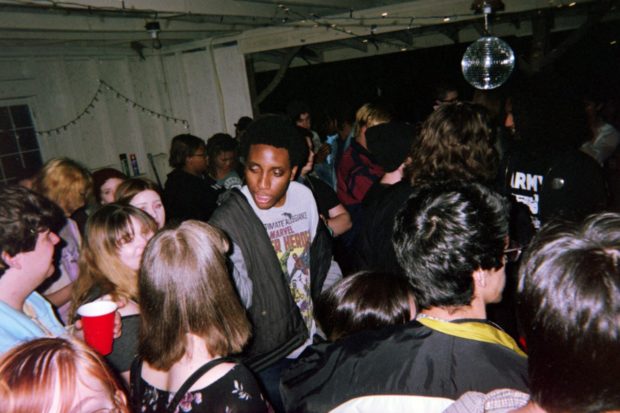

Rather than making ethical fashion a trend, let’s make it a permanent practice. | Khalid Al-Alawi/The Cougar
Whether you’re into fashion or just throw on the first thing in sight, most of us have heard the terms “ethical fashion” and “fast fashion.” As the new waves of minimalism and sustainability are moving from fads to note-worthy trends, the word “ethical” is popping up more and more. But what exactly does buying ethically mean?
When someone refers to ethical fashion, they are most likely referring to a brand or business that oversees the design, production, retail and purchasing in a way to make sure each step of their process is moral.
To be considered an ethical brand, one must address some of the largest issues with the fashion industry such as working conditions for employees, exploitation, fair trade, sustainable production, the effect on the environment and testing on animals.
As people are becoming more and more aware of the deterioration of our Mother Earth, environmental awareness has become a staple in the buying process. One of the first notable steps for ethical fashion was the switch from desirable textiles, such as leather and fur, to a vegan alternative known as faux.
History of sustainable clothing
“(The fur you wear) will reveal to everyone the kind of woman you are and the kind of life you lead,” according to Vogue’s 1929 feature “The Fur Story of 1929,” as reported by the Smithsonian. It wasn’t until almost five decades later that faux was really accepted into the realm of high-fashion brands.
In New York Magazine in 1971, American actress and activist Doris Day made one of the most profound statements of the time on the issue of using fur for clothing.
“Killing an animal to make a coat is a sin,” Day said. “A woman gains status when she refuses to see anything killed to be put on her back. Then she’s truly beautiful.”
After Day, organizations such as PETA started using models and other women of high standing, such as Naomi Campbell and Cindy Crawford, as ammunition against the harming of animals for strictly aesthetic purposes.
Currently, the strive for ethical fashion is still on its way. Slow but steady wins the race, right?
As of March 2018, designer, business indie and activist Stella McCartney became one of the loudest voices in fashion for her bold move to become entirely independent. McCartney has been tackling the abusive relationship between the fashion industry and our environment for over two decades and officially became an outlier when she made her brand completely cruelty-free.
“One percent of clothing is recycled! Only one percent,” McCartney said. “I mean, what are we doing?”
Many do not realize how much waste we really are making.
“On average, a piece of clothing is worn just seven times before being thrown away,” according to a 2017 survey by Barnardo’s.
The few number of times clothing is worn isn’t what is most concerning to me—it’s that it gets thrown away. I understand the feeling of getting bored with wearing the same thing, but there is better use for this fabric than to sit in a landfill for 30 to 40 years before the fibers start to break down.
How to make it work
As the ethical fashion movement makes its way to the top of consumers’ concerns, more and more are becoming educated about the fast fashion issue at hand. It is similar to the resolutions that everyone tries to adhere to at the start of a new year, but let me suggest we keep this resolution for a little more than a month.
The main concern I always hear about moving toward anything that is more conscious or ethical is that it’s expensive or inconvenient.
“The fashion and garment industry needs to offer ethically sourced clothing to the marketplace at a reasonable price, and the producers and retailers have to be able to make money investing in ethical fashion,” according to the Fashion Revolution, an organization that —. To keep up with our current consumption climate of expected immediate gratification, industries need to alter their products to fit a larger target market.
From my experience in the retail industry, a lot of fast fashion brands such as Forever 21, Zara, H&M and Topshop— all of which are in the top 10 fast fashion brands in the United States— experience an extraordinarily high amount of employee turnover.
Retail turnover tends to be based on low wages, lack of training, lack of development for the position and other personal issues that can lead to employees feeling unsatisfied.
The solution to unethical fashion practices and retail employee dissatisfaction is for fashion companies to change “their thinking and (moving) away from the race to the bottom and begin to see the economic, as well as the humanitarian, advantages of investing in human capital,” according to Fashion Revolution. “If you make sure your workers can make a living and provide food, education and healthcare you can create a consistent turnover because your workers are happy and satisfied.”
It’s like the saying “happy wife, happy life,” but in this case “happy workers, higher efficiency.” The sad yet realistic thing about this, however, is that many consumers only care about the price tag in front of them, and this is why fast fashion brands are so successful. With their affordable prices, consumers can get more bang for their buck.
We all love leaving the store or website and feeling like we got the best deal ever, but you know what the best deal ever would be? To refine our consumption habits in a way we can stop killing people and our planet.
As consumers, you have a few options: invest in ethical brands for a little more money, thrift or buy vintage so you are not actively supporting brands that may be using unethical tactics or reuse fabrics and make your own fun, unique clothing.
Thanks to the rise of the internet, retailers no longer have to rely on brick-and-mortar stores to house their merchandise. Because of this, a ton of ethical retailers have been able to pry into the market.
There are so many options now for men, women, kids, babies, you name it to stunt sustainability. With options for people of all sizes and body types to participate in sustainable fashion practices, there is no excuse. So the next time you’re thinking of doing some retail therapy, think ethically! Mother Earth will thank you.
arts@thedailycougar.com
—
“The transparent truth behind what you’re wearing” was originally posted on The Daily Cougar


















